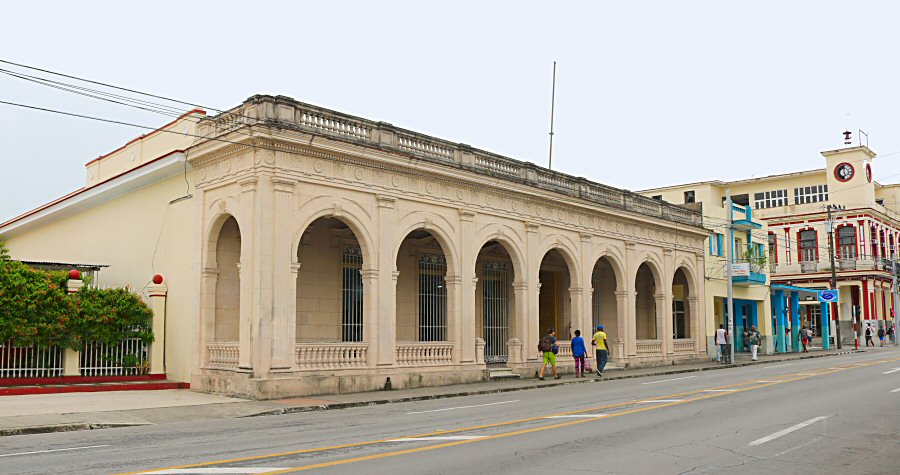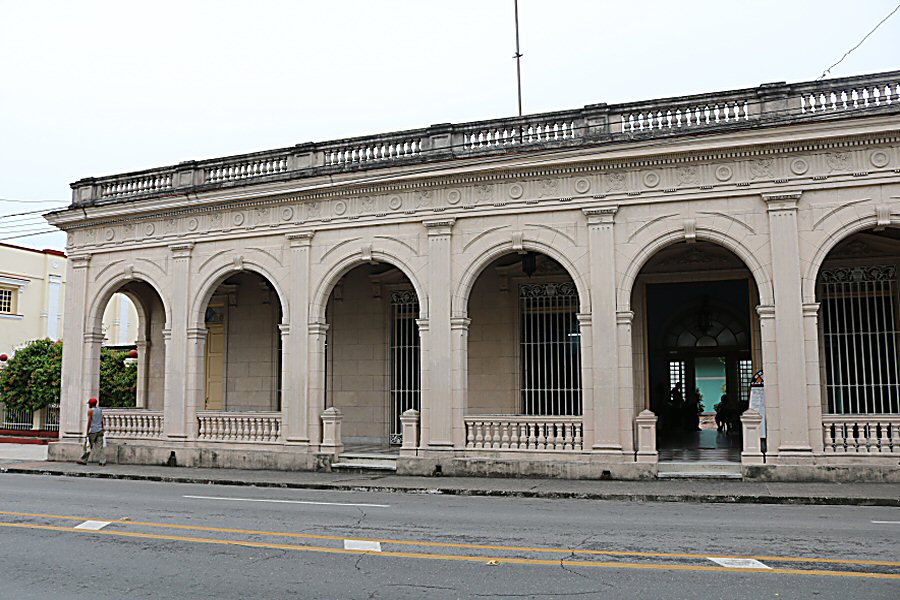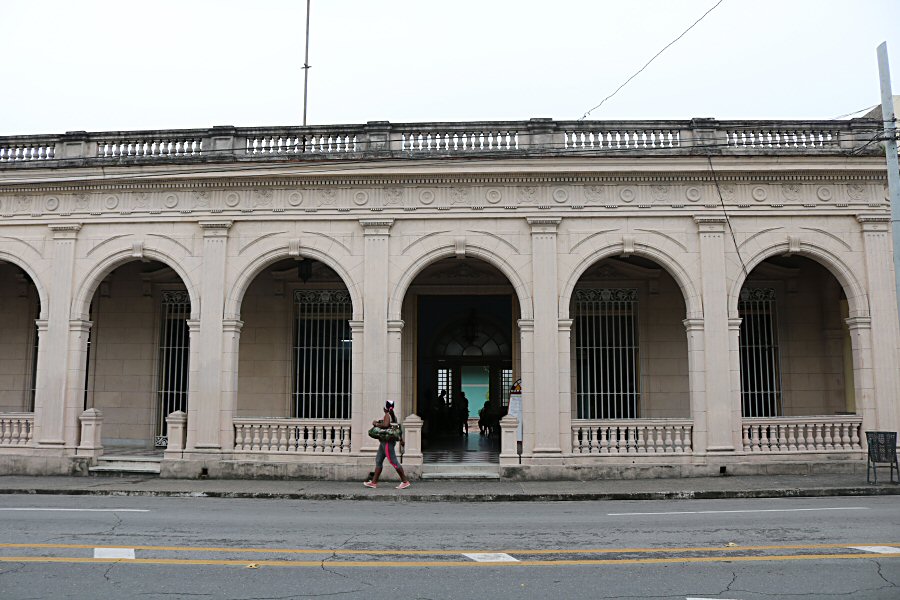
This eclectic-style building, which hosted the Provincial Council after 1892, the Governorship and some cultural institutions and organizations after the establishment of the Republic, was converted into a museum to display the history and cultural characteristics of the region from pre-Columbian times to the present.
History
The land where the Provincial Museum is located today belonged to Cerafina García, who sold it to Francisco Galves in 1875. In 1883, Francisco Galves sold the land and the house on it, made of mud of tiles, to Valencian Agustín Antón, a Medical License holder. Agustín Antón demolished the house and built two houses (# 108 and # 110) made of brick and tile, with flat roofs and seven arched columns at the front. He used one of the houses as a home and the other one as consulting room.
In 1892, these houses were sold to the Provincial Council of Pinar del Río which stayed here until 1898, when the American intervention took place. From this date until 1902, the governments of the intervention used these houses.
From 1902 to 1959, the Provincial Government of the Neocolony was established in the building, with different governors of this period passing through.
In the first years of the Republic, these two houses were still preserved as independent buildings, but between 1910 and 1913 they were joined at the back due to the need of the Provincial Government to create offices that will serve in different fields.
During the reign of the Provincial Governor Ramón Fernández Vega (1927-1929), major changes were made to the building. The façade of the building was created with stonework, which is the one that remains today. In addition to many new arrangements, the inner courtyard was renovated in the Sevillian style, and a fountain was built inside and a bust of the first governor Luis Pérez y Rodríguez made of jaimanita stones, was erected.
Another important event that took place during the republican period was the creation of the School of Plastic Arts of Pinar del Río in the building, which remained here until 1959. After the Revolution, different organizations passed through the building, such as the Revolutionary Government, the People's Courts, a dispensary, the directory of the Federation of Cuban Women, among others.
After a through restoration, the Museo Provincial de Historia of Pinar del Río opened its doors with a single room on December 14, 1979. Two years later, on the same day in 1981, the remaining rooms (five permanent and one temporary) were put into service.
It is noteworthy that this museum was opened in Pinar del Río before the opening of municipal museums was encouraged with the enactment of Law No. 23 on Museums in 1983.


